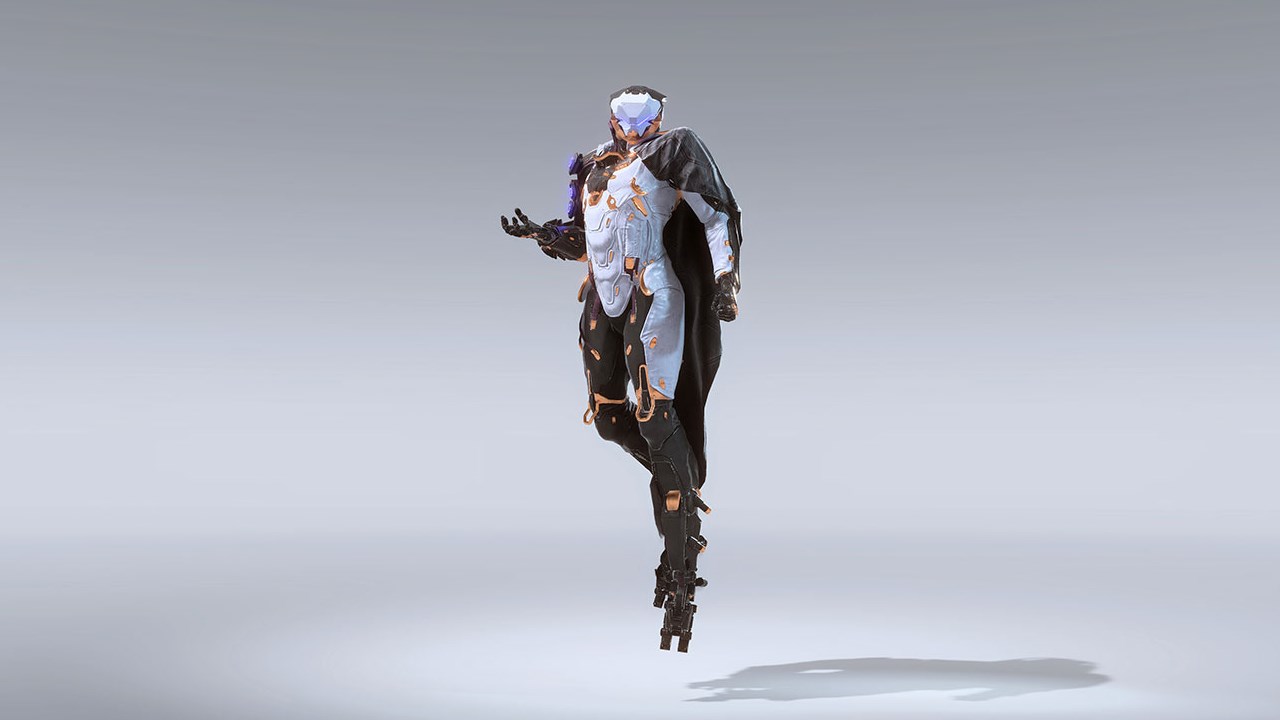BioWare believes that “Anthem really represents that next evolutionary step” for the studio
GamesRadar sits down with BioWare game director Jon Warner for an in-depth look at Anthem
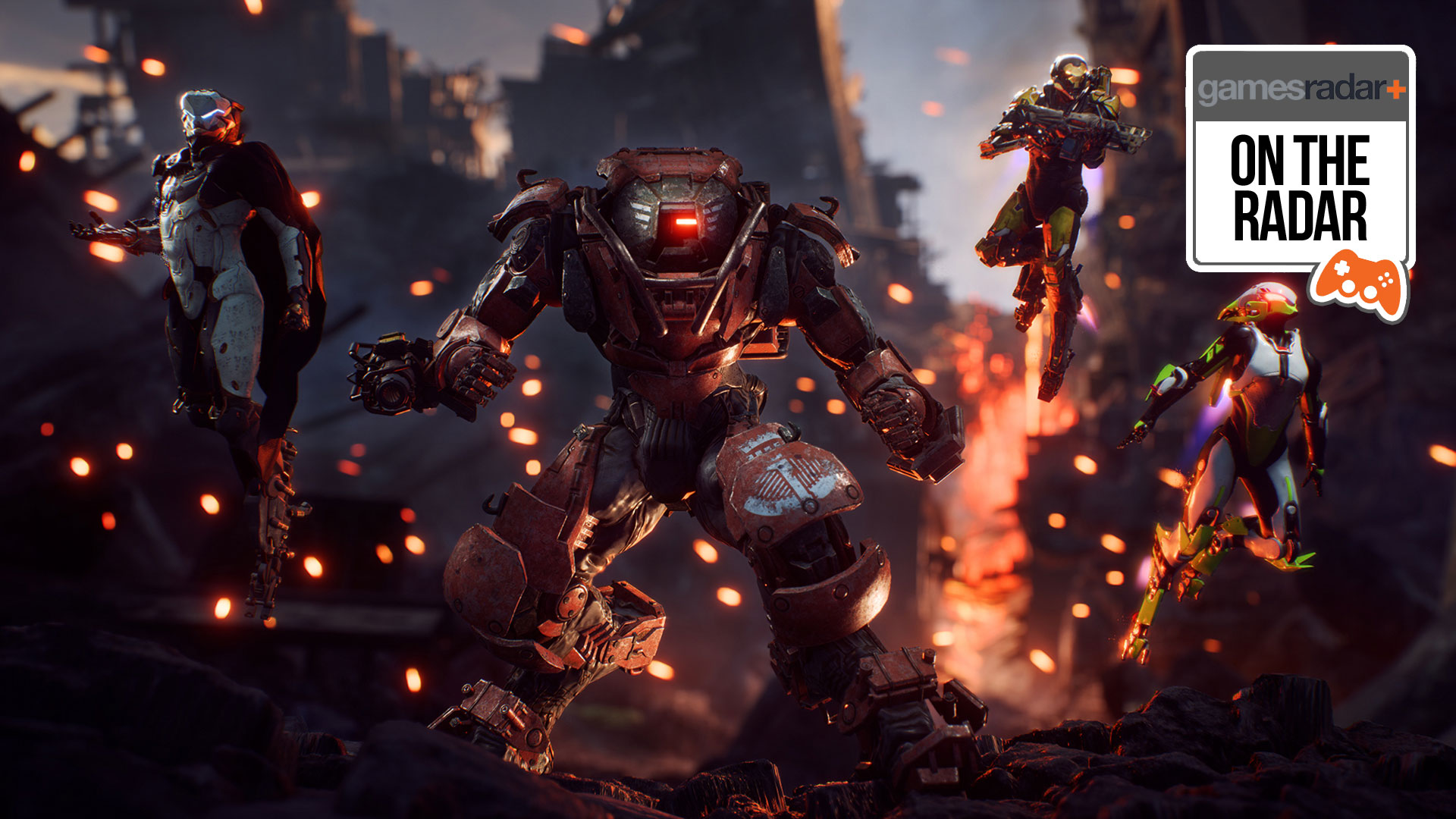
“For me, Anthem really represents that next evolutionary step," game director Jon Warner tells us. As far as BioWare is concerned, this creative endeavour represents the next chapter in the studio's incredible story. But BioWare's new Anthem game could well be more than that – for you, the players, and for the wider industry. The way in which Anthem is attempting to merge narrative design and online mechanics could in fact light the path for the next evolution of multiplayer gaming. We’ve been enthused by Anthem from the moment it was revealed back at E3 2017 and, despite the comparisons it invites to the likes of Destiny 2, Warframe and The Division, Anthem really is its own animal.

Over the next two weeks, GamesRadar is delivering all of the information that you could ever need to know about Anthem. The On The Radar: Anthem hub is where you will find all of our in-depth and exclusive coverage of BioWare's latest.
The path to evolution can, of course, be messy business. Progress, advancement, and innovation are the lifeblood of the video game industry, but there will always be missteps and BioWare has made its share over the years. Whatever the failures, the false starts and the pitfalls, however, evolution is essential to the growth of a studio like this. What stands out above all else is that this is BioWare’s vision and every facet of its experience is being brought to bear, not so that it can keep making the games of the past, but so that it can lead the charge into a new future. Anthem is different from what has come before, but it carries with it the core values of BioWare.
“I think that if you look at all of our games, starting with Baldur’s Gate, and then looking forward, you’ll see that there is an evolution of our storytelling technique going on,” Warner tells us, a sentiment that has been at the heart of what BioWare has been trying to define here over Anthem’s six years of development. Through titles like Mass Effect and Dragon Age, BioWare has established a signature approach to storytelling. It’s one that utilises a core cast of unique characters to drive you deeper into a central narrative, an all-encompassing single-player experience that, despite being clearly authored, is presented in such a way that you feel as if you have authority over its direction. Of course, BioWare knows that this isn’t the only way that it can leverage storytelling to invest a player in a world and its characters.
New Horizons
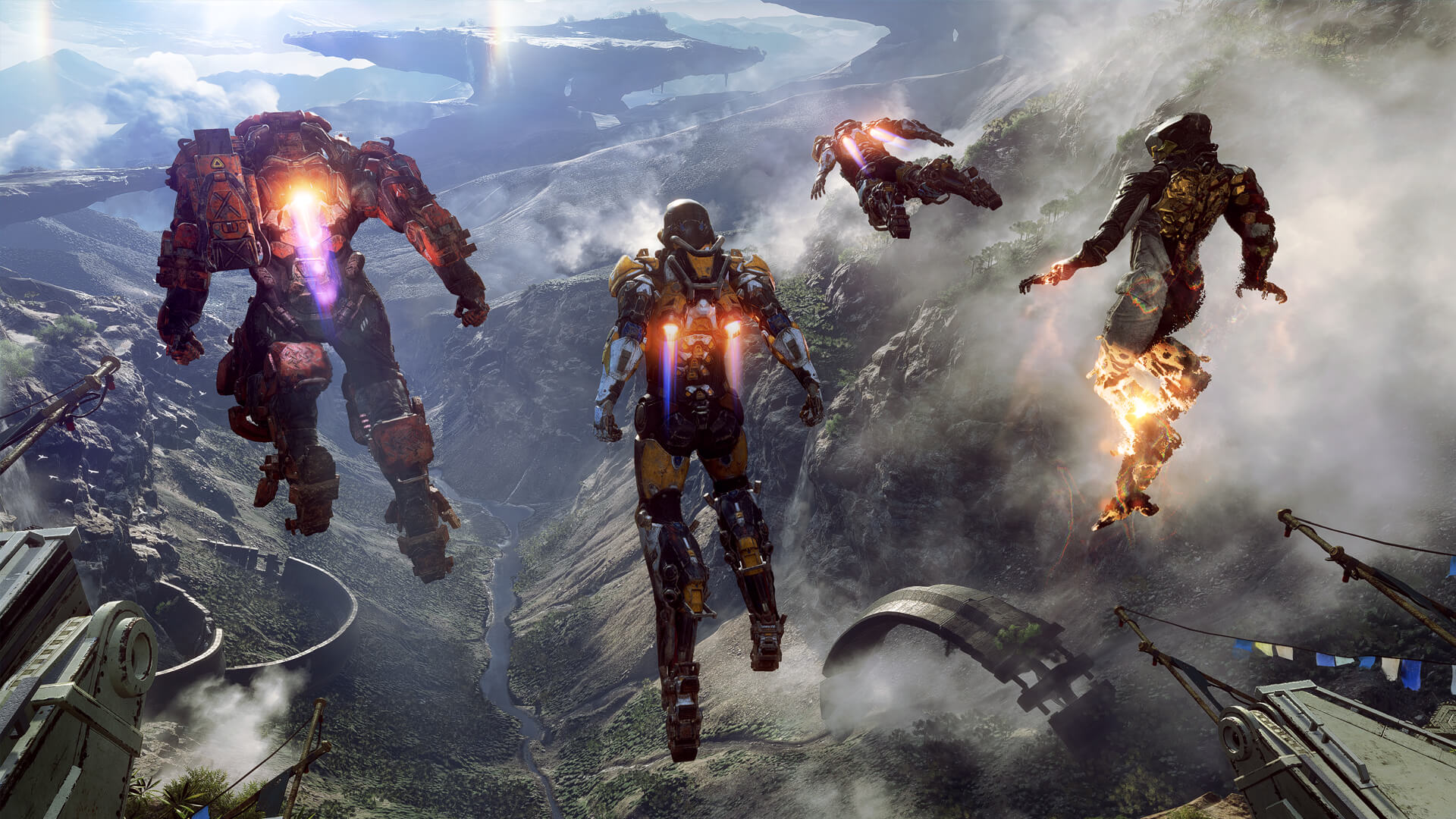
Anthem may run counter to your perception of what a BioWare game could or should be, but this upcoming title actually looks to retain its ties to the studio’s legacy in a number of ways that may surprise you. This is a game with a clear focus on co-operative gameplay, one that emphasises exciting adventures and spectacular battles within a gorgeous shared world occupied by other human players. It took just a few minutes with Anthem for the broader concept to click into place with us, for us to understand that this is BioWare’s classic approach to world building applied across an all-new canvas.
“You should probably start thinking of it in two streams,” Warner suggests. “There is a more traditional story, which features the freelancers versus The Dominion – it’s a very well crafted story with a beginning, middle, and end. Then there’s the story that goes on in the world; Anthem is a world that was left undone by its creators, the gods left it and it has become super dangerous. That’s not a conflict we will ever solve and so it’s a platform to tell endless stories on. That’s the job that a freelancer has, and it will always be a job for a freelancer.”
"Anthem is a world that was left undone by its creators, the gods left it and it has become super dangerous. That’s not a conflict we will ever solve and so it’s a platform to tell endless stories on."
Jon Warner, Game Director
There’s still a main narrative thread that runs throughout the world, one that’s driven by your relationships with a host of conflicted companions, although all of this is weaved throughout a shared open world in which other players and emergent events can help drive the construction of stories that BioWare never actively conceived. This is a BioWare game in which the story never needs to end, told in an environment that we are desperately eager to explore more of.
For the private story, the part that belongs to you and you alone, we have to look at Fort Tarsis, your base of operations that no other real-world player will ever step into and interrupt. Here is where you’ll interact with your pit crew, build relationships with a group of core companions, learning more about them and defining your place within this story. Fort Tarsis is like the Normandy, only many times larger and more involved than anything we’ve seen from BioWare before. “It features into this idea that we had, it’s ‘our world, my story’,” says Warner. “Fort Tarsis is a place where you get to be by yourself, with your NPC companions, and really spend as much or as little time as you want digging into that side of the game. Then you can go out into the open world, that’s where the missions are, and you can just freely explore it.”
Sign up to the GamesRadar+ Newsletter
Weekly digests, tales from the communities you love, and more
A never ending story
Fort Tarsis is also where you’ll really get to dive into the lore of this world and get a sense of what is driving your story forward. It is, in some respects, also the emotional core of the experience. You’ll see the hardships that the people of this planet are experiencing, how the half-built and broken nature of it has influenced the development of its population. BioWare has said that the plots of the various agents handing out missions will be begging to cross over with one another, not least because they often serve different factions with competing interests. As large as Fort Tarsis is, it’s actually a quite tightly knit community when you get down to it, it would appear. Most interesting to us, we should expect Fort Tarsis itself to change and develop as you take on missions with the different factions, allowing you to have a real impact on this personal space in an otherwise shared experience.
But, this being a BioWare game, as impressive as the world building is visually, it’s equally as impressive in terms of story and mechanical reasoning. While Anthem is being built as a playground for your imagination, it’s a playground built on a fictional world that has its own set of rules. The story of this place, of the Shapers who left this world unfinished, and the ‘Anthem of Creation’ that is both the cause of so much trouble and the power that everyone appears to covet, is all threaded through the mechanics and design of what exists within the world. A great example of this is the Javelins, the exoskeleton suits at the heart of the game. Suits that not only facilitate Anthem’s incredible, exhilarating action, but feel perfectly reasoned within the fiction of this world.
“This isn’t a world of mass production, there aren’t big factories that are cranking out Javelins and weapons,” Warner reveals, giving us some insight into the ways in which BioWare has sought to weave lore throughout every aspect of Anthem’s creation. “It’s more of a society that’s built around craftsmanship. A Javelin is actually hand crafted like an old school Rolls Royce. It’s actually hand built. So, the weapons needed to feel substantial and chunky. We started from that space, and it was a really nice marriage between design and sound, arriving at that place where the Javelins just felt powerful and good to wield.”
Out of the ashes of Mass Effect 3
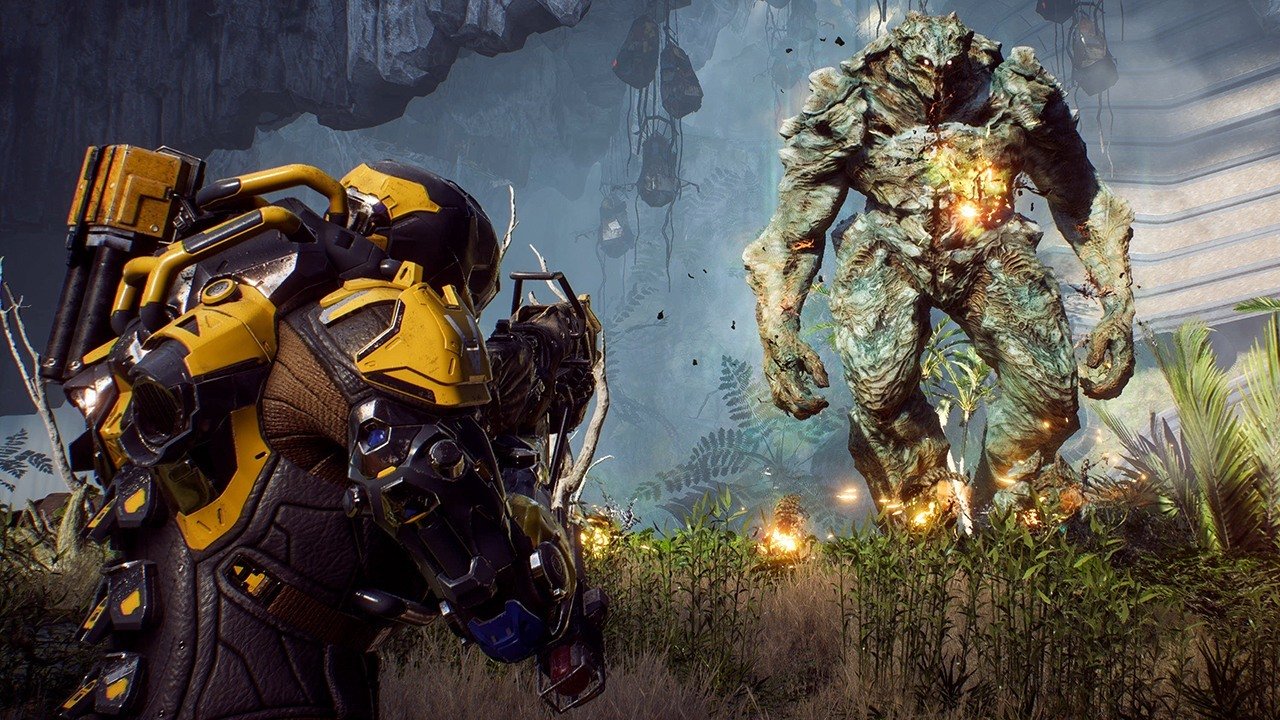
This in turn, according to Warner, was born from how the game itself was originally conceived, as a small group within BioWare began to concept the new IP after wrapping work on Mass Effect 3. “Broadly thinking about it, we knew we wanted to do something that’s open world, we knew we wanted to do something that was more social, and so as we started thinking of ideas, we let that be our guiding principle, and arrived at this interest in this,” he explains. “We knew that we wanted to create a world environment that was proportionally very large, compared to humans. And we started thinking about how are we gonna traverse it, and what kind of tools we were gonna give to players. It was a really natural kind of thing, ‘man, we should allow players to fly’. So our team put together a really quick prototype, and as soon as you tried it, you were like, ‘Oh, yeah, this is fun.’ Then it was just refinement, endless refinement and iteration to get it to just feel so good.”
And that refinement process has paid off, because there really is nothing else quite like the experience of piloting a Javelin in this world. If we had to force a comparison, it might be to the swinging mechanic in Spider-Man, but only in the sense that both manage to create a feel and momentum that is like a perfection of something so many have tried before.
Warner puts a large part of it down to how the camera is being used as well as the tight flight controls, because when the camera was wrong, motion sickness could become an issue. “It’s not on the game and character, and the controls to feel right, it’s got to be about the camera as well,” he tells us. “Yeah, there were iterations where I would pick up the controller and say ‘I can’t play’. So yeah, it was a challenge.”
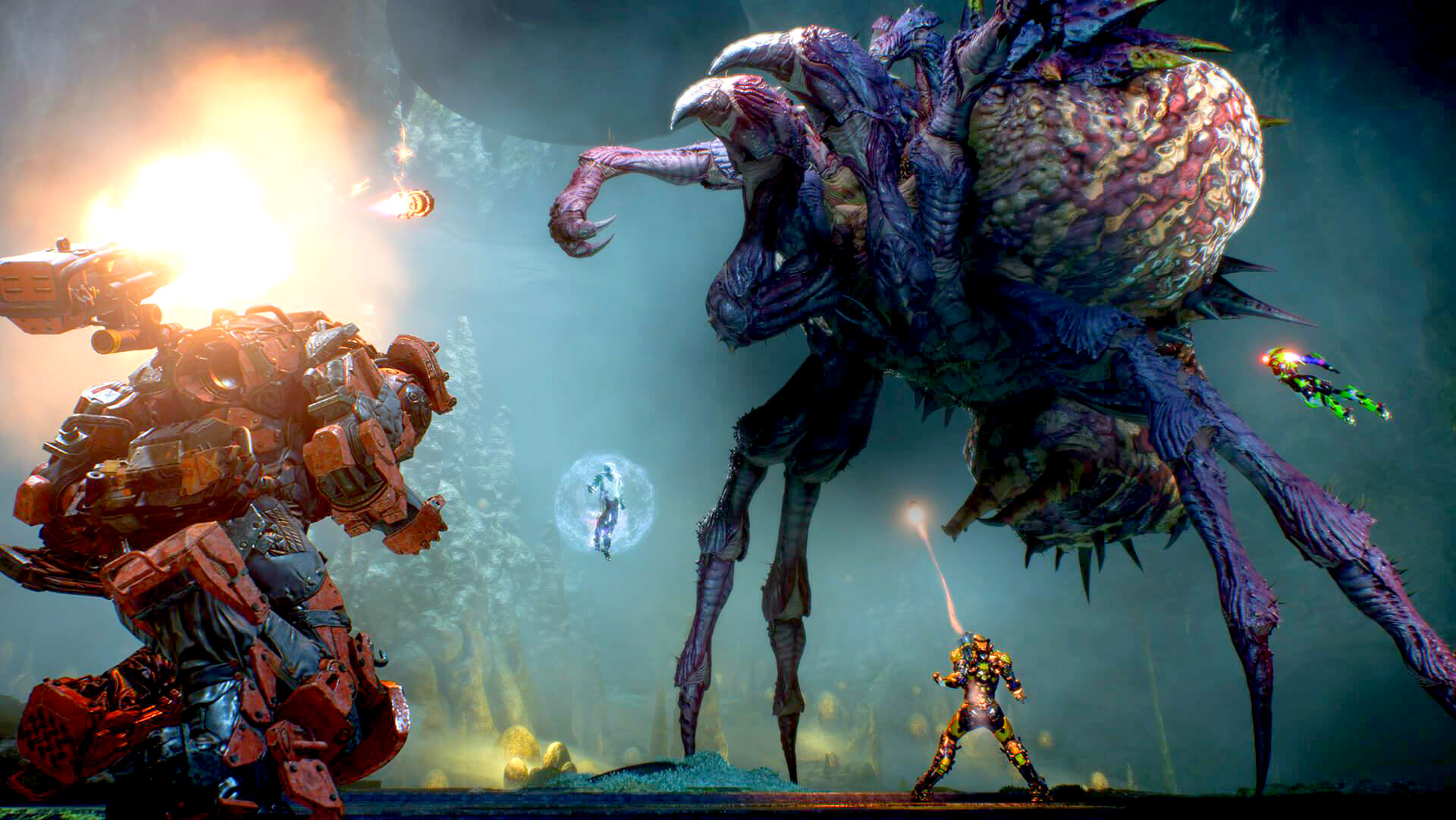
That’s one challenge that we are happy that the studio took on and was able to overcome. The Javelin suits set Anthem apart from the competition with ease. The freedom of movement you are granted across Anthem’s sprawling open world is truly exhilarating; the degree of precision you are granted over the control of your suit, be it in air or on land, is incredible, particularly as you are able to move at breakneck speeds. While we were given limited opportunity to go off and explore in our hands-on session, we gained a clear sense that this is going to be a world – be that on our own or in the company of other freelancers – that we are going to devote many an hour to whipping across in search of secrets and understanding.
At this stage, we’re still yet to see the true extent of just how large this open-world is, but given the ways we are being given to explore this entrancing space we get the feeling we are yet to even scratch the surface. A particular highlight is how you can transition seamlessly from flying through the air to propelling yourself through water.
“It’s shocking, isn’t it?” Warner considers. “You know, honestly, I think that we, as gamers, have kind of been accustomed to, or trained, to think of our worlds as tabletops. So, as you’re running across it, and you come to water, and you get in water, it’s like oh yeah, I get that. But when you add this extra verticality to it, and there’s now a weird transition between the two, it’s just like, why weren’t we doing this before?”
BioWare steps up its combat design
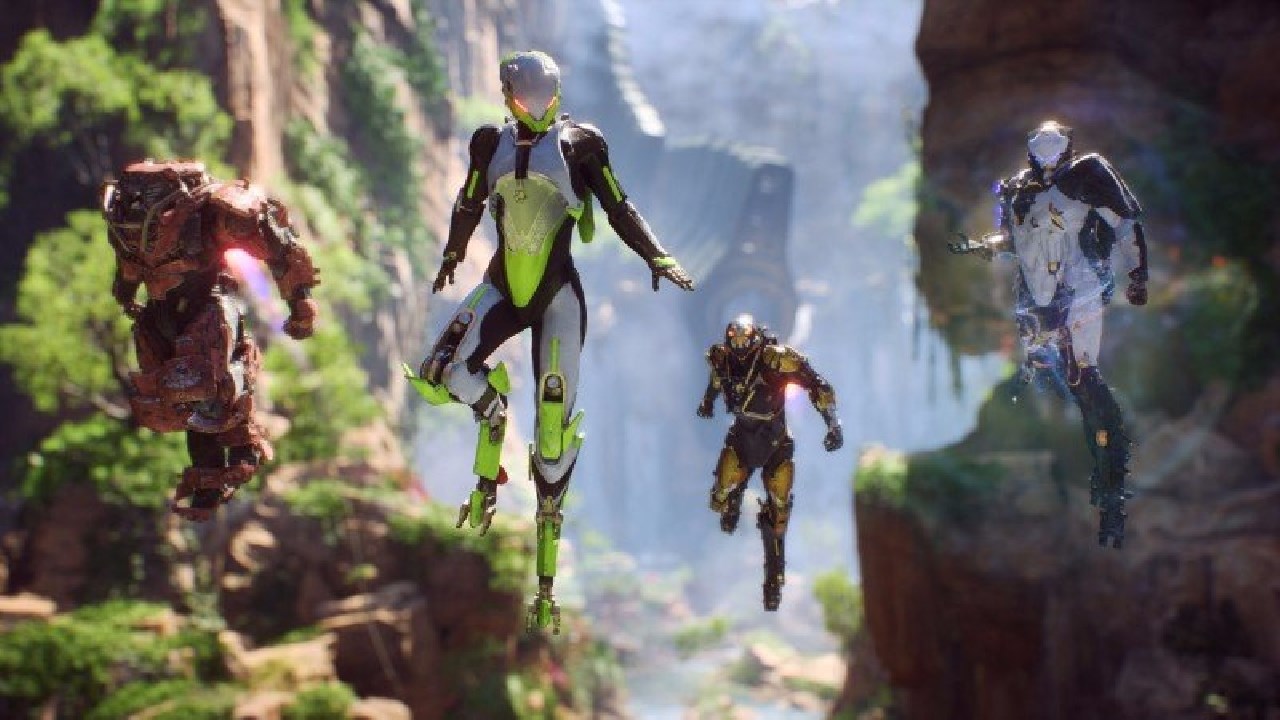
Of course, the other core pillar of the moment-to-moment gameplay that is going to be of paramount importance is the feel of the combat, something that has been somewhat elusive for BioWare in the past. However, with that hand-made feel being strived for throughout the weapon design, the studio may finally have cracked it. While the speed and precision of the Javelins may imbue navigating the open world with a sharp sense of immediacy, this also extends out into each of the combat scenarios we find ourselves flying into contact with. The verticality of the maps helps bring a new dimension to battles, ensuring that it always feels as if you are on the verge of being completely overwhelmed by enemy forces.
We are able to meet each emerging threat head on thanks to each Javelins manoeuvrability and capacity for smart interplay between weapons systems. Each of the four suits available at launch – each effectively taking on a different standardised class role – come with a variety of different weapons and suit abilities, and these can be combined in combat to create spectacular scenes of large-scale destruction that’s as pleasing to the eye as it is crippling to enemy defences. Interestingly, BioWare has designed its combat systems in such a way that it doesn’t necessarily require players to be in constant communication to get the most out of this side to the game – an instinctual reaction to the fact that many console players have long-abandoned their microphones, even in co-op driven experiences.
Each Javelin suit is a force to be reckoned with, but should a team focus fire on the same group of enemies the small-arms weapon fire and more impressive abilities will combine naturally. It encourages players to work together as the result of doing so is clear and immediate. It feels like a welcome answer to some of the problems that continue to crop up in other genre games. When we said that the Javelin suits set Anthem apart from the competition before, we weren’t kidding around. “There’s an interesting variety of [weapon combinations], and one of the interesting things is how that actually flows. It doesn’t require a great deal of coordination,” Warner tells us. “Which is nice, because it really speaks well of the flow of the game. But then as you’re really going after more difficult and sophisticated content in the game, and you are having that nice, tight coordination, you can get some really spectacular results.”
An adventure with friends
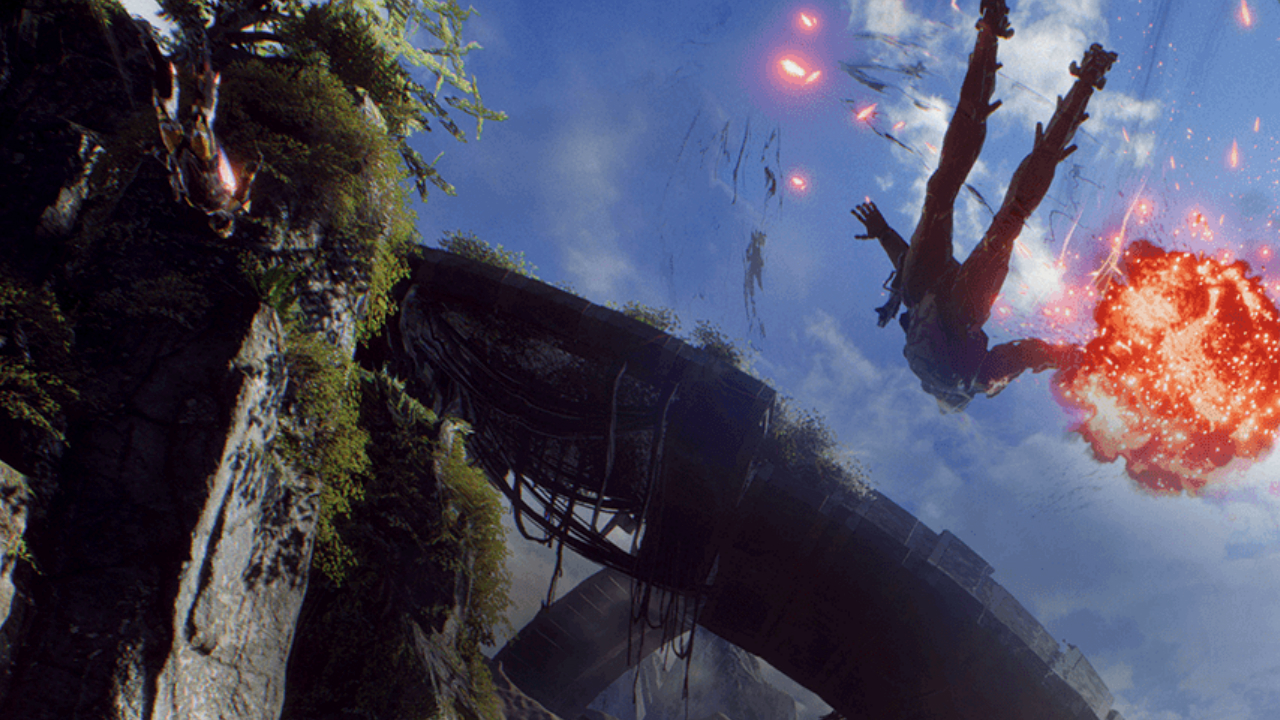
It doesn’t seem like too much of a stretch to say that BioWare is hoping for a similarly pleasing reaction in how it combines the online and solo adventure experiences of Anthem together.
While Fort Tarsis is the hub for something close to a traditional BioWare role-playing experience, the open spaces of the planet beyond its protected walls are where the emergent chaos of multiplayer and co-op can take hold. It’s a space where you can spend time with friends and share the adventures you find or meet up with new players and assist in their journeys. Importantly, it’s down to you to decide as to how you want to approach that.
“You’ll never just go out on like a mission and see other people flying around,” explains Warner. “If you go into the world in free play, you might encounter strangers who are just out there, but you don’t have to hang out with them. If you want to be playing with other players, but maybe your friends aren’t online, when you start a mission, other freelancers who would be able to see you, you open up the world map, and you can actually see what other people are attempting to do, and you can just say, “Oh, I see. I wanna join that.” And people can join you midway to give you reinforcement help. Once you’re done with that kind of experience, you split apart.”
"This has been a great opportunity for us to put gameplay first"
Jon Warner, Game Director
In this respect BioWare is reaching into a new skill set, testing itself against something more complex and convoluted than before, but we wondered if that might almost be quite refreshing. “Yeah, it is, it’s very refreshing, it’s invigorating,” Warner enthuses.
“And usually, when you talk about a Mass Effect, or a Dragon Age, people invariably end up talking about the plots or the points, and it’s very refreshing, when people talk about Anthem, they talk about flying or fighting monsters, or the gear, the Javelins, and it’s been a great opportunity for us to put gameplay first.”
It’s also interesting to note that while open world and online gaming aren’t considered to be in BioWare’s wheelhouse, the studio isn’t entirely without experience in these fields. Mass Effect 3’s multiplayer has often been cited as an important influence on the direction of Anthem as well as a relatively underrated element of that game’s release, while the Austin team has been able to pass on its best knowledge of maintaining a live game experience. “Our team in Austin, working on The Old Republic, they have a lot of experience doing this,” Warner agrees. “So, it’s really just leveraging different team members to get the right expertise.”
Live-service storytelling
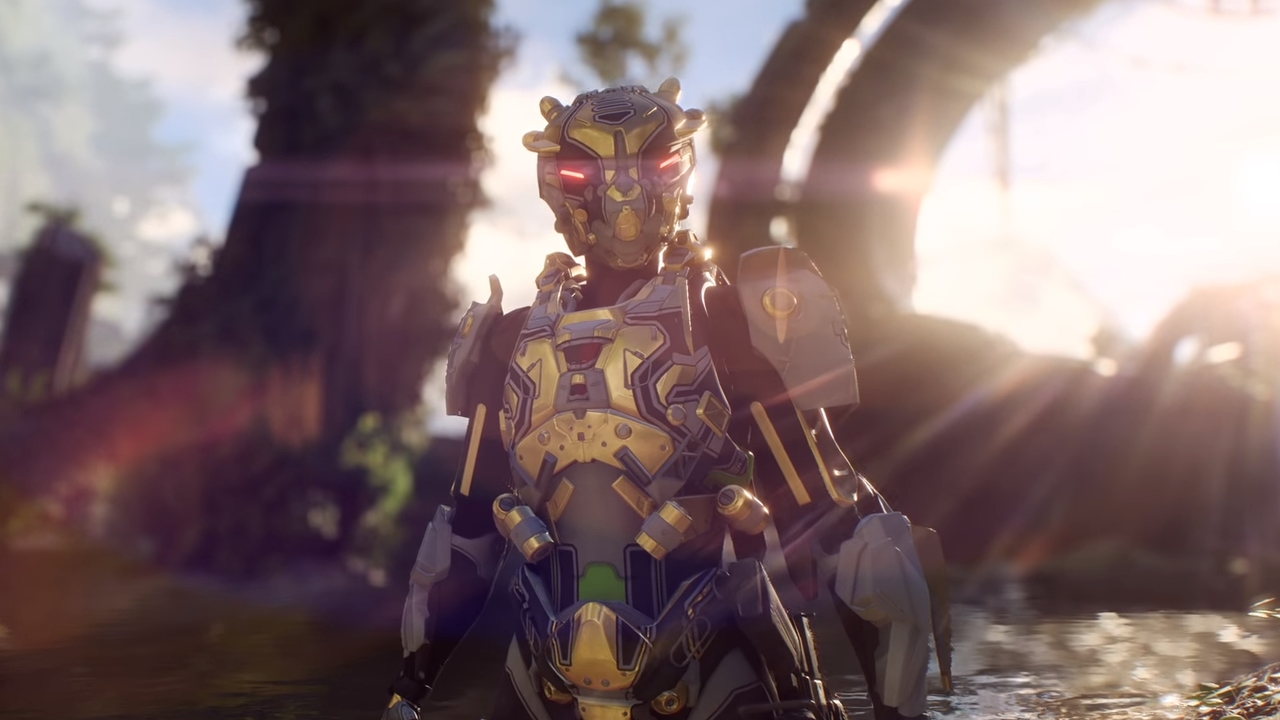
In terms of developing a live world narrative, probably the best example of the form right now if Epic’s Fortnite. While it’s quite clearly playing in the burgeoning Battle Royale space, Fortnite’s ability to leverage an ongoing story throughout its seasons of content – of its introduction of new elements to a single map space that develops around the players without disrupting the core ethos of play – is clearly going to have influence all throughout this genre. Warner doesn’t get too much into how Anthem will tackle shared-world events, but BioWare seems to be putting a plan in place, recognising how impactful those kinds of meta-stories can be to convincing us we should spend more time in the world. “We’re looking at it as kind of a holistic experience, and making sure that we’re paying attention to, and doing things that will engage players across the board,” Warner says. “Everybody’s got kind of a different motivation. Providing lots of interesting reasons to come back.”
“You can choose to play through the campaign as single player."
Jon Warner, Game Director
Importantly though, so much of this is up to us as players to engage with or not. Many BioWare fans have been drawn to the studio’s work because it is about solo adventures and immersing yourself in a world. Whether or not that immersion will be broken by the presence of other players, we’re not sure. From our experience, we suspect it will simply require a different flavour of suspension of disbelief to buy into it all. That all said, you can play solo if you want to. “You can choose to play through the campaign as single player,” Warner confirms. “You go into your options and you set this for invite-only experience. And, you know, you can do that, and it’s completely viable. But it really does shine and sing when you’ve got full support.”
What we were pleased to discover more than anything while playing Anthem was that for all that it is an evolution of what BioWare does, we could feel the roots of all of its greatest strengths reaching back. Anthem is a game that honours this studio’s past achievements, but isn’t weighted down by them. Anthem is a shared world delivered in a way that only this team could make it. “It’s very important to us that we create immersive worlds, where you can have companionship, and where you get to be the hero of your own story,” concludes Warner. “I think those elements are very much intact with Anthem. We’re adding things to it, we’re adding these interesting social storytelling elements to it. But, those moments, that companionship and strong characters, those are very much there.”
This broad overview of Anthem is just the beginning our new editorial series, On The Radar. Come back to GamesRadar every day over the next two weeks to find new Anthem features, news, interviews, and analysis.

Josh West is the Editor-in-Chief of GamesRadar+. He has over 15 years experience in online and print journalism, and holds a BA (Hons) in Journalism and Feature Writing. Prior to starting his current position, Josh has served as GR+'s Features Editor and Deputy Editor of games™ magazine, and has freelanced for numerous publications including 3D Artist, Edge magazine, iCreate, Metal Hammer, Play, Retro Gamer, and SFX. Additionally, he has appeared on the BBC and ITV to provide expert comment, written for Scholastic books, edited a book for Hachette, and worked as the Assistant Producer of the Future Games Show. In his spare time, Josh likes to play bass guitar and video games. Years ago, he was in a few movies and TV shows that you've definitely seen but will never be able to spot him in.

